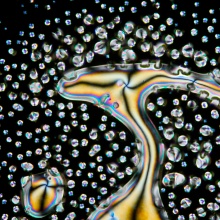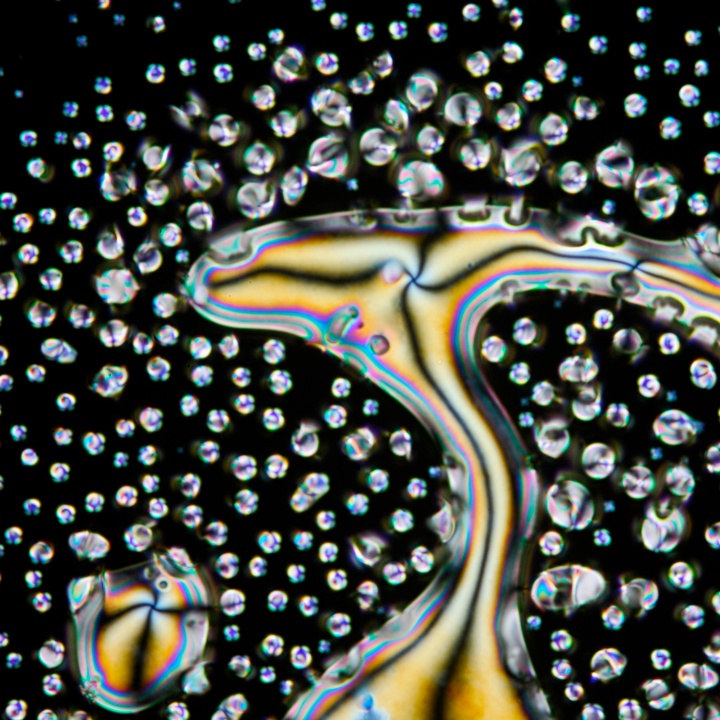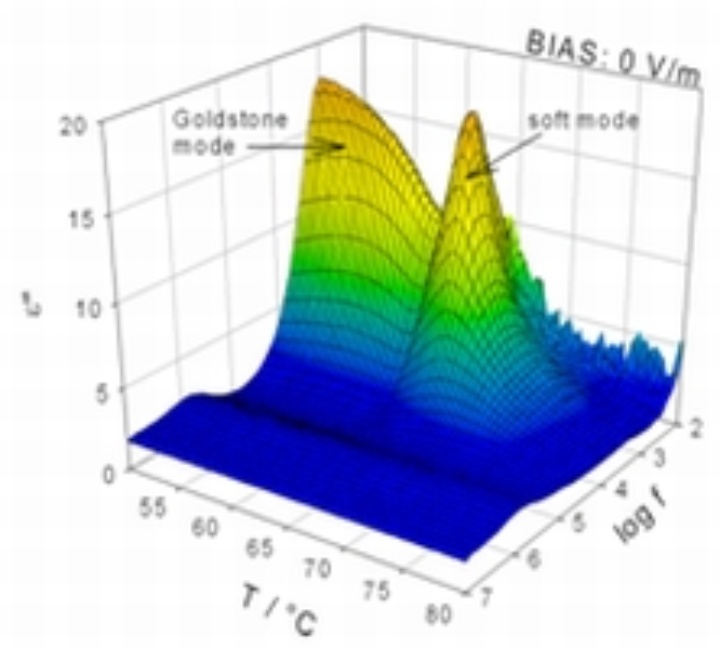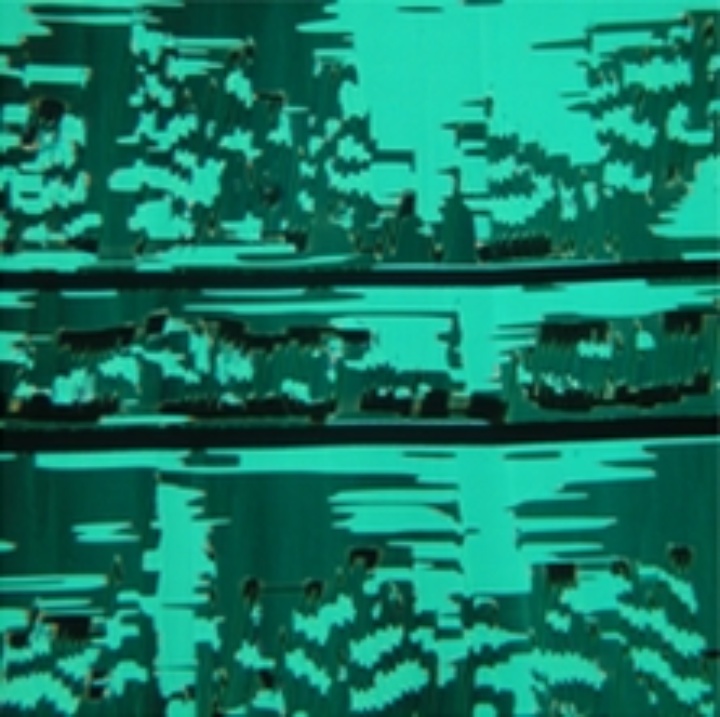Phase transitions & collective phenomena in liquid crystals
Phase transitions – the physical transformations between the various states of matter – are among the most remarkable examples of collective phenomena in nature. They are signified by abrupt changes in certain macroscopic properties, the origin of which is intimately connected to issues of symmetry, dimensionality as well as the range and symmetry of intermolecular interactions. Due to their soft nature with intermolecular interaction energies comparable to the thermal energy, liquid crystals exhibit a plethora of continuous or weakly first order phase transitions, making liquid crystals a perfect matter for the experimental and theoretical study of phase transitions.
We are mainly interested in phase transitions between smectic liquid crystal phases, in particular ferroelectric smectics. The transitions are experimentally studied (e.g., by X-ray diffraction, dielectric spectroscopy, Raman spectroscopy, and certain optic and electro-optic experiments) and analyzed in close collaboration with theory groups by phenomenological as well as molecular theories. In an international research effort with partners in the USA, Canada, Sweden and the UK, our group substantially contributed to the microscopic understanding of the mysterious “de Vries-type” phase transition in smectics, where the smectic layer thickness remains practically unchanged despite the tilting transition from the smectic A into the smectic C phase. The recognition of the molecular mechanisms behind this transition now led to the rational chemical design of new de Vries-type smectics, materials which are most important to avoid certain defects in ferroelectric liquid crystal display (FLCD) devices.
Selected Publications
Orientational fluctuations near the smectic A to smectic C phase transition in two “de Vries”-type liquid crystals
D. Nonnenmacher, S. Jagiella,Q. X. Song, R. P. Lemieux, F. Giesselmann, ChemPhysChem 14, 2990-2995 (2013).
DOI: 10.1002/cphc.201300358
Design of Liquid Crystals with "de Vries-like" Properties: Frustration between SmA- and SmC-Promoting Elements
J. C. Roberts, N. Kapernaum, Q. Song, D. Nonnenmacher, K. Ayub, F. Giesselmann, R. P. Lemieux, Journal of the American Chemical Society 132, 364-370 (2010).
Order-disorder molecular model of the smectic-A–smectic-C phase transition in materials with conventional and anomalously weak layer contraction
M. V. Gorkunov, M. A. Osipov, J. P. F. Lagerwall, F. Giesselmann, Physical Review E 76, 051706 (2007).
DOI: 10.1103/PhysRevE.76.051706
Current topics in smectic liquid crystals
J. P. F. Lagerwall, F. Giesselmann, ChemPhysChem 7, 20-45 (2006). DOI: 10.1002/cphc.200500472
Dielectric spectroscopy of 'de Vries' type smectic A* – C* transitions
M. Krueger, F. Giesselmann, Physical Review E 71, 041704 (2005).
DOI: 10.1103/PhysRevE.71.041704
Optical and X-ray evidence of the "de Vries" Sm-A* - SmC* transition in a non-layer-shrinkage ferroelectric liquid crystal with very weak interlayer tilt correlation
J. P. F. Lagerwall, F. Giesselmann, M. D. Radcliffe, Physical Review E 66, 031703 (2002). DOI: 10.1103/PhysRevE.66.031703
Mean-field coefficients and electroclinic effect of a ferroelectric liquid crystal
F. Giesselmann, P. Zugenmaier, Physical Review E 52, 1762 (1995).
DOI: 10.1103/PhysRevE.52.1762

Frank Gießelmann
Prof. Dr.Professor
- Profile page
- +49 711 685 64460
- Write e-mail
- Secretary: Room 9-102; Tel. +49 711 685 64491

Nadia Kapernaum
Dr.Senior Scientist





